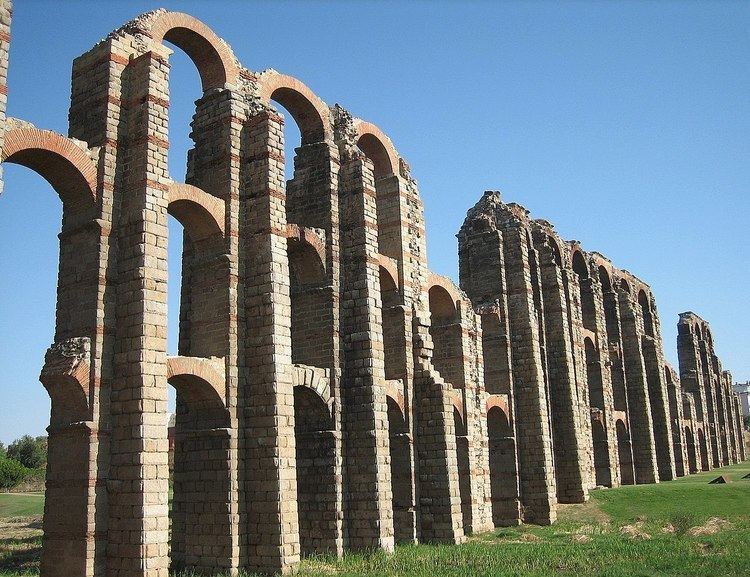Location Spain Criteria iii, iv Province Province of Badajoz UNESCO World Heritage Site inscription 1993 | Type Cultural Reference 664 Phone +34 673 45 68 91 | |
 | ||
UNESCO region Europe and North America Address Av. de Via de la Plata, S/N, 06800 Mérida, Badajoz, Spain Hours Open today · Open 24 hoursThursdayOpen 24 hoursFridayOpen 24 hoursSaturdayOpen 24 hoursSundayOpen 24 hoursMondayOpen 24 hoursTuesdayOpen 24 hoursWednesdayOpen 24 hours Similar Puente Romano - Mérida, Temple of Diana, Basílica de Santa Eulalia, Roman Theatre, National Museum of Roman Art | ||
Acueducto de los milagros m rida spain
The Acueducto de los Milagros (English: Miraculous Aqueduct) is the ruins of a Roman aqueduct bridge, part of the aqueduct built to supply water to the Roman colony of Emerita Augusta, today Mérida, Spain.
Contents
Only a relatively small stretch of the aqueduct still stands, consisting of 38 arched pillars standing 25 metres (82 ft) high along a course of some 830 metres (2,720 ft). It is constructed from opus mixtum - granite ashlar blocks interspersed with red brick - utilising a double arcade arrangement. The structure originally brought water to the city from a reservoir called the Lago de Proserpina, fed by a stream called Las Pardillas, around 5 km (3.1 mi) to the north-west of Mérida.
It is thought to have been constructed during the 1st century AD, with a second phase of building (or renovations) around 300 AD. In later centuries, the inhabitants of Mérida dubbed it the "Miraculous Aqueduct" for the awe that it evoked.
The aqueduct was one of three built at Mérida, the other two being the 15 kilometres (9.3 mi) long Aqua Augusta, fed by the Cornalvo reservoir, and San Lázaro, fed by underground channels. The aqueduct is preserved as part of the Archaeological Ensemble of Mérida, a UNESCO World Heritage Site.
In the immediate vicinity, a small Roman bridge called Puente de Albarregas runs parallel to the arcades.
